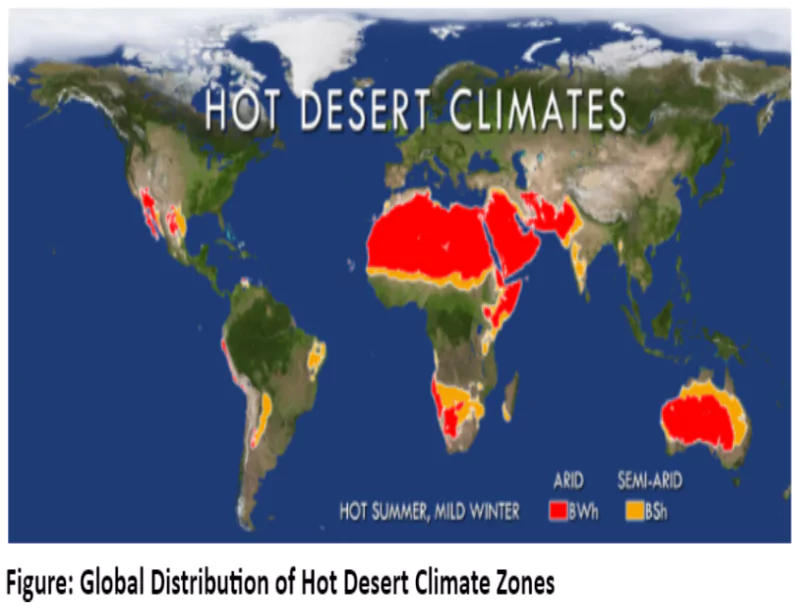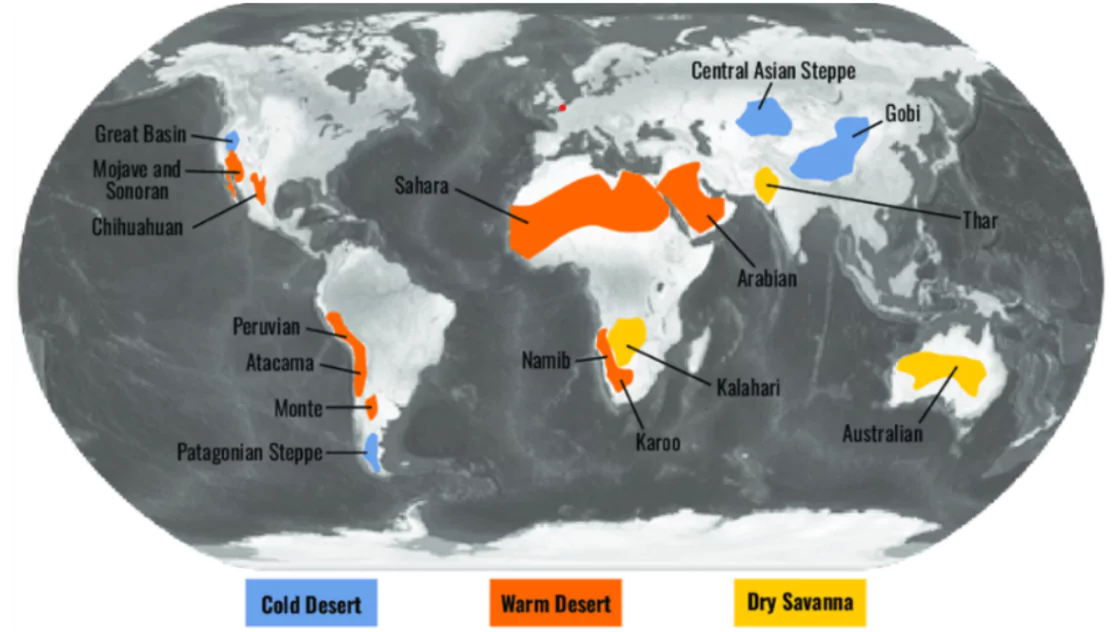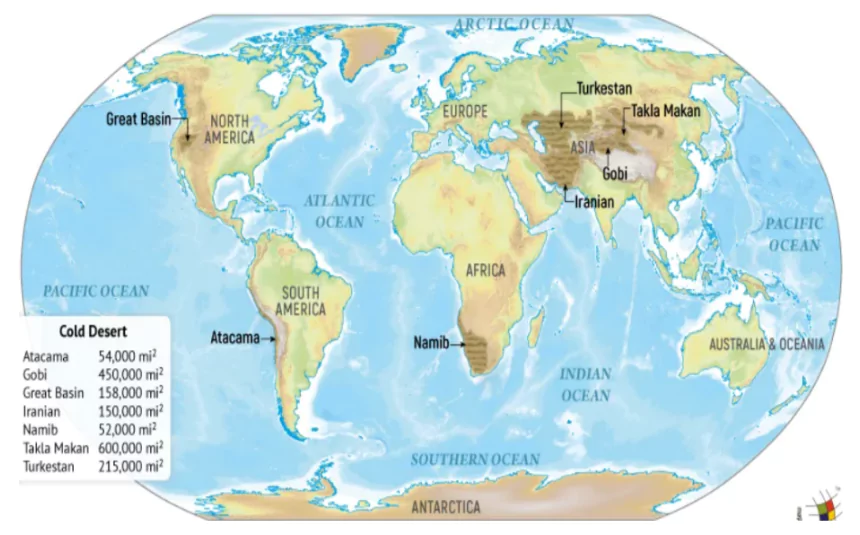![]() April 29, 2024
April 29, 2024
![]() 5089
5089
![]() 0
0
Deserts are regions of scanty rainfall that may be Hot like the hot deserts of the Saharan type or Temperate as are the mid-latitude deserts like the Gobi. Hot deserts, located between 15° and 30° N and S, owe their aridity to offshore Trade Winds, while mid-latitude deserts often sit atop plateaus and receive less than 25 cm of rainfall.


 Desert interiors, however, experience much higher summer temperatures and winter months are rather cold.
Desert interiors, however, experience much higher summer temperatures and winter months are rather cold.| Reason for Location of Major Hot Deserts Along Horse Latitudes
|
| Must Read | |
| Current Affairs | Editorial Analysis |
| Upsc Notes | Upsc Blogs |
| NCERT Notes | Free Main Answer Writing |
Desert climates, whether hot like the Sahara or temperate like the Gobi, are dry with sparse vegetation. Major hot deserts are situated in areas influenced by subtropical high-pressure belts, resulting in permanent drought conditions. Human settlements rely on water sources like rivers and oases for agriculture, with oases being crucial for cultivation and habitation. The desert economy includes agriculture, mineral extraction, and nomadic tribes, each playing a role in the desert’s unique way of life.
| Related Articles | |
| Wind Erosion: Hot Desert Landforms | Rainfall in India: Monsoons, Variability, and Impact on Life |
| EARTH’S LATITUDE | Earth’s Temperature |
<div class="new-fform">
</div>

Latest Comments